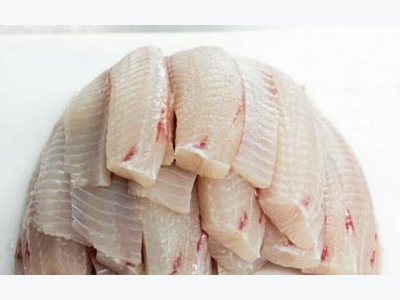Troubling times for tilapia in the US

A negative consumer perception and price competition with pangasius have made for tough times. Photo: Sergio Scripilliti
This year has been one of change for the tilapia sector, execs agree.
Alex Ko of tilapia and feed giant Grobest told this year's Global Aquaculture Alliance (GAA) GOAL conference that 2017 has been one of change in the tilapia sector.
"US demand has stopped growing," Ko said. Chinese tilapia makes up 90 percent of frozen tilapia in the US, Ko noted, but the market price at the pond level is at cost, "so the tilapia farmers aren't happy."
However, Liu Rongjie, of Hainan Xingtai Fishery Co., said that the market has been on a downturn since 2015.
Negative consumer perceptions and price competition with pangasius in particular have made for tough times.
Though Chinese tilapia production fell by 20 percent and US imports increased this year, the export value and profits have declined.
The only way forward, Rongjie said, is to build consumer confidence in tilapia through certification and active engagement.
Scott Williams, vice president of Quality Assurance and Environmental Stewardship at US-based BJ's Wholesale Club, said his company puts the focus on ensuring its customers can find what they want, and find it in the best quality.
When it comes to questions -- tilapia has been getting a lot of them lately -- Williams said the key is assuring customers that BJ's knows its source.
"We explain to them that we're monitoring it and keeping track of what they're buying and they can trust us," Williams said. "You're buying stuff from us in 2-pound bags, so you know you like it."
Tilapia sales, as is the case with other retailers and foodservice outlets, are showing some decline, Williams said, largely the result of some of the negative press surrounding the fish.
That said, "two things keep me up at night," Williams said. Labor issues is the first. The second is seafood losing its premium.
With Amazon pushing down Whole Foods prices, consumers may get the wrong impression of the value of seafood.
The top seller for the group is shrimp, but it also sells big volumes of tilapia and salmon as well.
This story originally appeared in our GOAL 2017 blog.
Related news
 Supporting access to credit for shrimp farmers
Supporting access to credit for shrimp farmers Shrimp farmers, businesses and government all claim that the fisheries sector has had many advantages and developments in recent years
 Vietnam seafood exporters: EU yellow card an 'opportunity to improve'
Vietnam seafood exporters: EU yellow card an 'opportunity to improve' The impact on Vietnam's seafood export business from the issuing of an EU yellow card will be felt throughout the supply chain according to a release issued
 Ecuador to spearhead global shrimp standards initiative
Ecuador to spearhead global shrimp standards initiative A new global shrimp leadership program aimed at expanding the country’s sustainable farming standards to farms around the world.